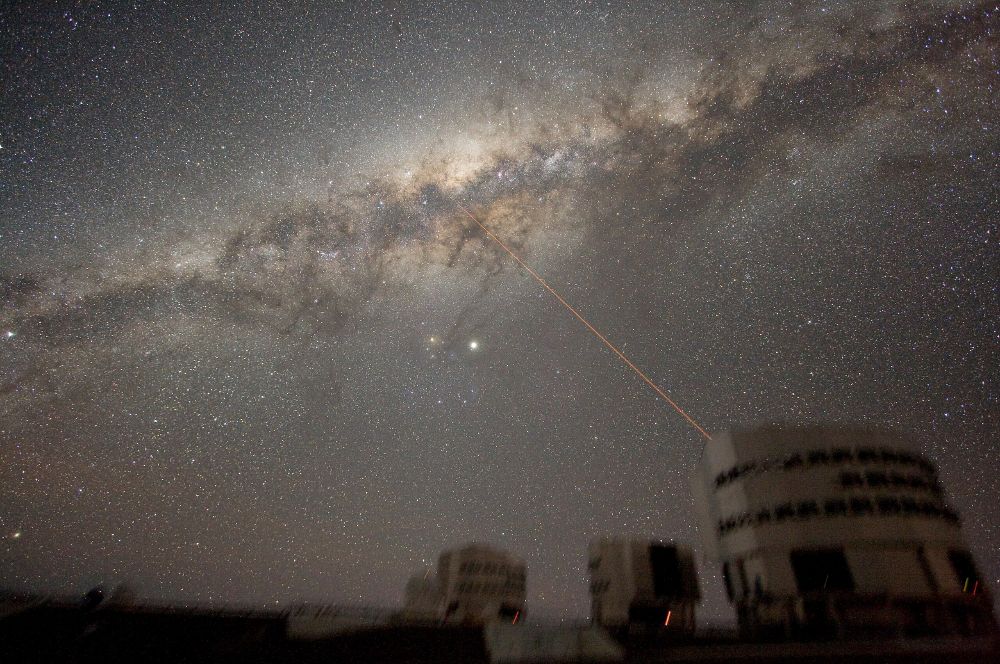
About 100 billion humans have walked the Earth.
About 100 billion stars roam the Milky Way galaxy.
About 10,000 humans have ever been paid to study the stars (if anyone has better data let me know).
So, modern astronomers are each lucky to the tune of 1 in 10 million!
28.11.2025 16:52 — 👍 4 🔁 0 💬 0 📌 1
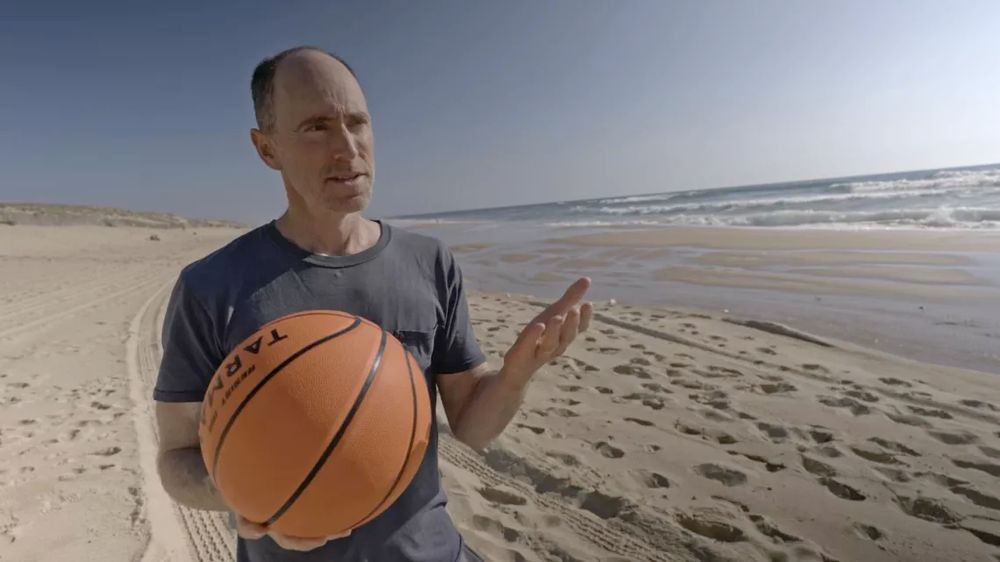
Here's a teaser: me on the beach showing how a basketball does not match 'Oumuamua's light curve!
My favorite was the "making a comet" demo with dry ice, or maybe going to check out the Vera Rubin telescope in Chile.
18.11.2025 11:27 — 👍 5 🔁 1 💬 1 📌 0

France TV - Replay et Direct tv des chaînes France Télévisions (ex Pluzz)
Retrouvez toutes les vidéos, articles et podcasts des programmes des chaînes de France Télévisions.
If you live in France, a new documentary about 'Oumuamua comes out Thursday evening, starting at 9pm on the France 5. Replays on france.tv after
I was scientific advisor (and I show up in several places), which was a great pleasure.
www.francetvpro.fr/contenu-de-p...
18.11.2025 11:21 — 👍 23 🔁 9 💬 3 📌 0
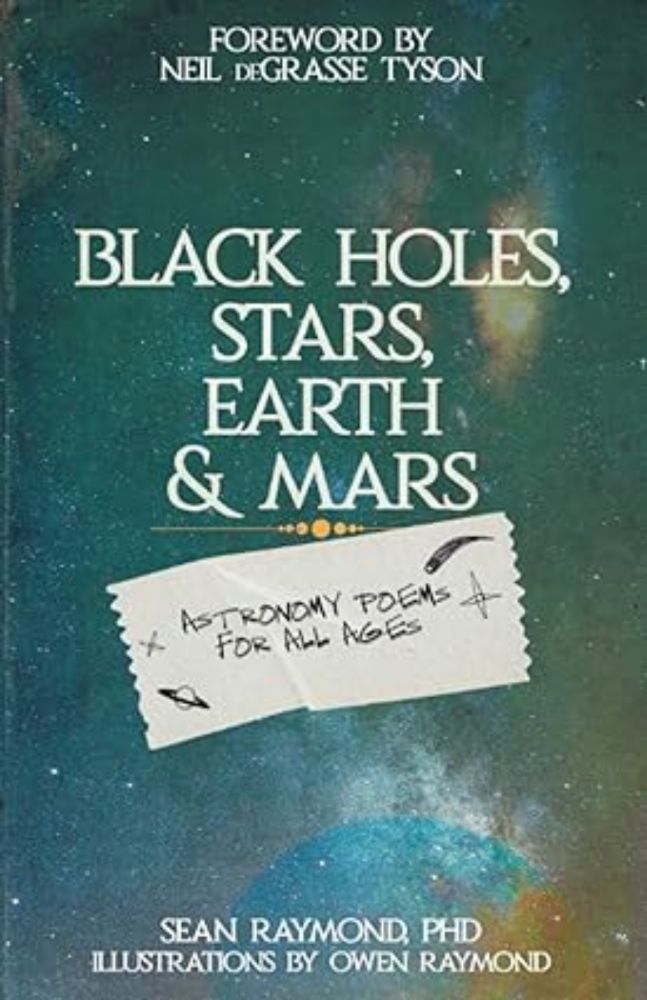
Black Holes, Stars, Earth and Mars: Astronomy poems for all ages
Black Holes, Stars, Earth and Mars: Astronomy poems for all ages [Raymond, Sean, Raymond, Owen, Tyson, Neil deGrasse] on Amazon.com. *FREE* shipping on qualifying offers. Black Holes, Stars, Earth and Mars: Astronomy poems for all ages
I just realized that a couple weeks ago was the fifth anniversary of the release of my astronomy poem book: Black Holes, Stars, Earth and Mars.
www.amazon.com/dp/B08LFZZWGZ
07.11.2025 12:11 — 👍 1 🔁 0 💬 0 📌 0
Here is a link to the original article, by Ozsvart et al: arxiv.org/pdf/2509.04165
19.10.2025 15:01 — 👍 0 🔁 0 💬 0 📌 0

Could the Sun’s Orbit Shape Evolution?
Could the Sun’s Orbit Shape Evolution? The connection between our massive star and the tiniest microplankton.
Here's a new article I wrote for @nautil.us about a new result hinting that variations in the cosmic ray flux hitting the Earth, which itself varies as the Sun oscillates vertically within the Galaxy, have a strong link to the diversity of microplankton.
nautil.us/could-the-su...
19.10.2025 15:00 — 👍 3 🔁 1 💬 1 📌 0
Constellations of co-orbital planets – planetplanet
The main challenge is the alternating prograde and retrograde rings of planets.
To build a single ring, I think you's need to pass through a horseshoe constellation phase (see planetplanet.net/2023/04/20/c...) and then damp out the librations. Obviously not feasible for humanity at the moment....
10.10.2025 17:40 — 👍 2 🔁 0 💬 0 📌 0
I guess it would be transits, not eclipses, but if the planets had moons they would also be blocking the light from the other planets all the time. A very astronomically-engaging place to be!
10.10.2025 14:55 — 👍 4 🔁 0 💬 0 📌 0
New animation of the ultimate engineered solar system for a talk I'm giving tomorrow at a sci-fi convention in Lithuania.
It has 400 rocky planets in the habitable zone of a single Sun-like star
It's perfectly stable (I simulated it out to about a billion years)
planetplanet.net/2017/05/03/t...
10.10.2025 13:51 — 👍 40 🔁 13 💬 5 📌 0

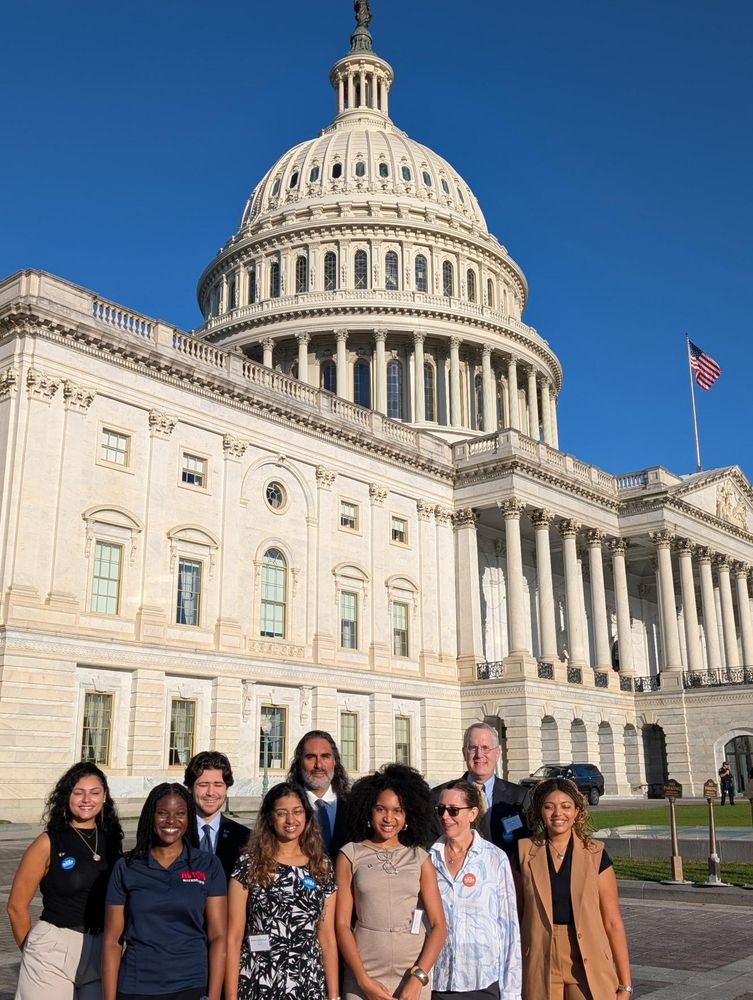
AAS members are on the Hill today to #SaveNASAScience and advocate for sustained funding for NASA, NSF, and our nation's other science agencies! Help us amplify their voices by calling and writing to your Congressional offices today: aas.org/action-alert...
06.10.2025 14:09 — 👍 29 🔁 14 💬 0 📌 3
Thanks!
If there was a very large amount of internal heat flux from tidal dissipation, it would likely be bad for habitability if the planet is close to the inner edge of the habitable zone, or good if it's beyond (colder).
The planet's orbit would also change (slowly) due to tidal dissipation.
09.09.2025 20:15 — 👍 1 🔁 0 💬 1 📌 0

Wild Orbits Prime Planets for Life
Looking for habitable worlds? Check the ones with extreme swings.
In my new @nautil.us article, I use a lot of recent research to argue that rocky exoplanets on eccentric orbits are often very good candidates for life.
(At least, eccentric/inclined orbits should not be used as a negative for habitability)
nautil.us/wild-orbits-...
09.09.2025 07:55 — 👍 10 🔁 1 💬 1 📌 0
It would be interesting to see what the mass ratio threshold is for stability -- does it have to be 1.000000 or could it be 1.01, 1.1, 2., ...?
03.09.2025 21:43 — 👍 0 🔁 0 💬 1 📌 0
That's a great idea to check!
03.09.2025 16:16 — 👍 1 🔁 0 💬 0 📌 0
Here's something new and weird -- eccentric rings of co-orbital planets.
They are stable indefinitely, from an orbital point of view.
Could they actually form and exist?
planetplanet.net/2025/09/02/e...
02.09.2025 21:17 — 👍 32 🔁 9 💬 4 📌 3

Flashback to 2012 when I ate the Sun
(Photo from the top of Vulcano in Sicily)
29.08.2025 15:03 — 👍 5 🔁 0 💬 1 📌 0

a 19th century embroidery sampler showing the solar system, the distance of the planets from the sun, and the length of time it takes each planet to circle the sun
Imagine the complicated and precious genius of the girl who made this embroidery sampler in 1811
The Solar System, sampler, unknown maker, 1811, England. Museum no. T.92-1939. Victoria and Albert Museum, London.
27.08.2025 23:01 — 👍 1003 🔁 314 💬 19 📌 31

Next comes a by-now routine dismissal of astronomical observations, in order to claim 3I/ATLAS’s dusty coma (which does exist: de la Fuente Marcos et al.; Seligman et al.; Bolin et al.) does not exist and is just photographic fuzz. What would be bold and novel would be to lean in to the observations of dust and assert that any spaceship coming in hot from the interstellar medium would be very dirty and in need of a wash.

Impacts by interstellar dust particles and interstellar gas particles can easily create a thin layer of dust on the surface of 3I/ATLAS, with no accompanying ices if 3I/ATLAS is not a comet. The interstellar speed of 3I/ATLAS is ~60 kilometers per second relative to the local interstellar medium. Any impacting matter would deliver ten times more energy per impacting proton than required to break a single chemical bond within the solid surface. The microscopic breakup of the surface to super-micron fragments by interstellar impactors, such as dust, gas and cosmic-ray particles, might have led over billions of years to the formation of large dust particles that are released close to the Sun and account for the glow ahead of 3I/ATLAS in its Hubble image.
Still can't get over @deschscoveries.bsky.social parodying Loeb, and Loeb straight-up playing out the parody a 3 days later.
Is Desch a clairvoyant, or did Loeb read this mockery of him and think—hey, that's actually a great idea!—and just plagiarize him?!
18.08.2025 02:57 — 👍 81 🔁 9 💬 2 📌 1

3I/ATLAS. A cat on my balcony
(En español aquí ) S ummary Recently, a new interstellar object passing through our solar system has been discovered: 3I/ATLAS. Thi...
Loeb’s bad science flies out faster than any one of us should have to deal with it. For a nice explanation of what’s wrong with many of his claims I have not addressed, see @hectorsocas.bsky.social ’s work here: tinieblasyestrellas.blogspot.com/2025/08/3iat...
12.08.2025 00:06 — 👍 26 🔁 12 💬 2 📌 2
Me neither -- it's really tricky to understand why our results are different. Either taking the Moon quadrupole into account is critical, or sampling different possible configurations for the flyby is essential.
10.07.2025 18:25 — 👍 2 🔁 0 💬 0 📌 0
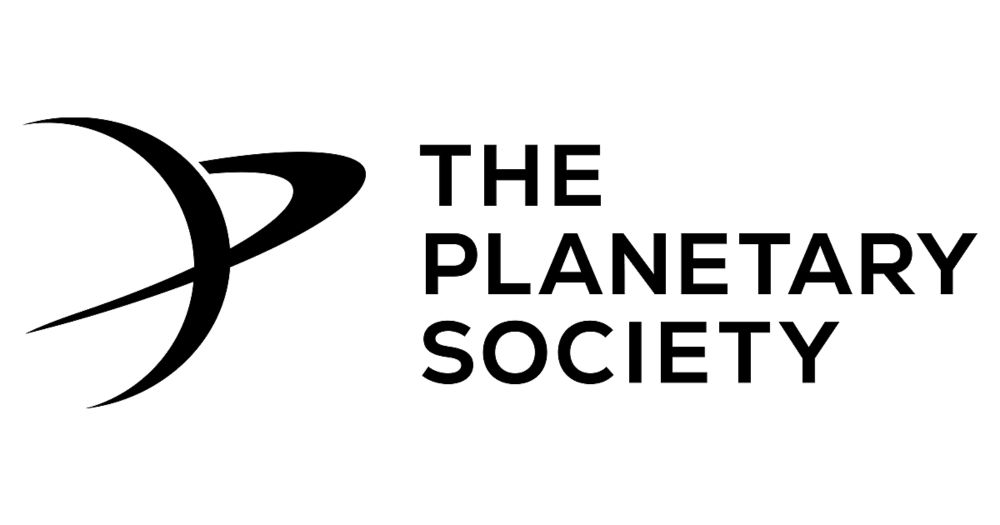
Every living NASA science chief unites in opposition to unprecedented…
The entire past leadership of NASA’s science activities have released a joint statement condemning the proposed 47% cuts proposed to the agency’s science…
Today, *every* living prior leader of NASA's science directorate have released a joint letter condemning the proposed cuts to NASA science. These individuals every administration from Reagan to Biden, and all believe these cuts are insanely destructive: www.planetary.org/press-releas...
07.07.2025 21:11 — 👍 1390 🔁 605 💬 11 📌 22
Folks need to remember that public funding of science drives economic growth and human quality of life decades into the future.
This is about more than saving jobs on the line now. It's about your future health, and the future of health and well-being for the next several generations.
07.07.2025 19:19 — 👍 77 🔁 27 💬 1 📌 0
The giant planet instability (the “Nice model”) – planetplanet
I suppose I should add that there is a lot more to know about the giant planet instability. I captured some of that in this blog post
planetplanet.net/2022/06/30/t...
30.06.2025 16:10 — 👍 0 🔁 0 💬 0 📌 0
Planetary scientist studying the formation and evolution of asteroids and comets. PI of the cameras on ESA's Hera mission. Also musician (3xperimental and Quantum Somnium)
Astrophysicist, lidar scientist
Comets are like 🐈: they have tails and they do what they want!
Podcasts et vidéos sur les astéroïdes, avec le planétologue spécialiste des petits corps, le Dr. Patrick MICHEL, directeur de recherche CNRS au Laboratoire Lagrange (UniCA, OCA, CNRS) et Global Fellow à l'Université de Tokyo.
🇸🇪 Exoplanet atmospheres + chemistry + formation at Uppsala University 🪐🔭 Also into astrobiology, policy, climate, equality/EDI, and scicomm ✨ (she/her) – linnboldtchristmas.wordpress.com
My goodness: It's full of planets!
European in Graz.
Often to be found at Space Research Institute at Graz!
(Yes, Graz hosts the Austrian Space Research Institute. It's awesome, check it out!)
(Ja, Graz hat die Weltraumforschung und sie ist toll)
Australian astronomer
he/him
Sydney/Gadi
This is the BlueSky feed of Raymond T. Pierrehumbert, Professor of Planetary Physics at the University of Oxford. Tune in for news about Principles of Planetary Climate, and diverse science and political commentary. (Also folk music news)
🔥 Blog by Dariusz Majgier. AI, fun facts, science & brilliant ideas:
👉 https://patreon.com/go4know
🔥 Get prompts, art styles & tutorials. Learn how to create Midjourney images/videos for FREE!
👉 Join me: https://patreon.com/ai_art_tutorials
Astrophysicist and science writer. My ongoing research lines include: Meteoritics, primordial planetary system materials, their physico-chemical properties, transport of volatiles to planets, planetary atmospheres and astrobiology. Saganist
Dad, Professor of Astronomy at the University of Louisville. He/Him/hey you. Opinions are my own. As are the typos.
Astronomy, datascience, ethics & occasional US/EU politics.
Professor of Astronomy and Astrophysics at Penn State.
Son, father, partner, scientist, teacher, student, human, Earthling.
Mostly posting astronomy. Mostly.
planetary astronomer | nearly famous | jwst interdisciplinary scientist | looks just like an ordinary mom | oboist (thoughts expressed here are my own)
Dwight Professor of Law, Columbia Law School. Ex-DOJ/OLC. Becoming familiar with your game.
How Rights Went Wrong available at Bookshop.org (https://tinyurl.com/se32my4r), Amazon (https://tinyurl.com/3vbcfwa4), or a decent public library.
Science integrity consultant and crowdfunded volunteer, PhD.
Ex-Stanford University. Maddox Prize/Einstein F Award winner
NL/USA/SFO.
#ImageForensics
@MicrobiomDigest on X.
Blog: ScienceIntegrityDigest.com
Support me: https://www.patreon.com/elisabethbik
Bad Astronomer (formerly @BadAstronomer), SciCommer, Dork. Crash Course Astronomy guy. He/him. Newsletter: badastronomy.beehiiv.com
I'm self-employed so my opinions do in fact represent my company's.
Science editor / GeekWire / Universe Today / Cosmic Log / Fiction Science podcast / The Case for Pluto
SWE/MLE, rodent whisperer, writer. ex-MSFT, Xoogler. Timeline features gestalt reasoning, verifiable rewards, and unlabeled infohazard. Adults only, but not for any fun reasons. We could all be Green Lantern, but instead we're fighting to be Lex Luthor.
Currently trying to understand planet formation as a professor of astronomy at the University of Wisconsin-Madison
Former theoretical astrophysicist, current tree programmer @ ETH Zürich, developer of Cat Herders on Steam.


















